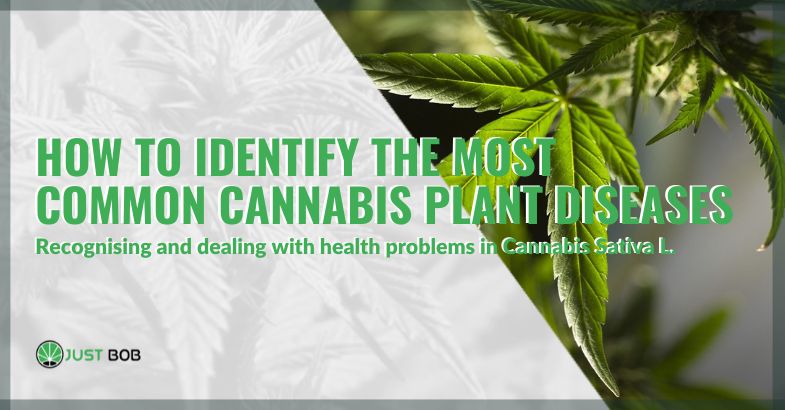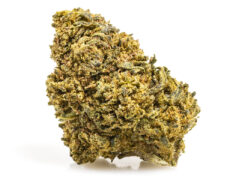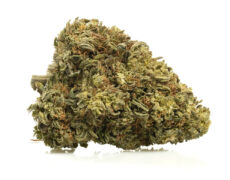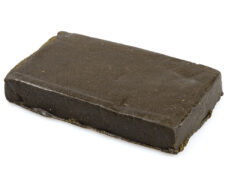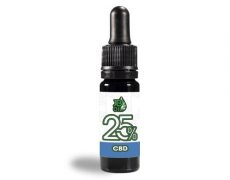Published on: 07/05/2025
Recognising and dealing with health problems in Cannabis Sativa L.
Cannabis Sativa L. is a plant of extraordinary botanical and biochemical complexity, and is the focus of growing scientific, industrial and cultural interest. Like any other plant organism, its life cycle is exposed to potential threats that can compromise its health, vitality and final characteristics.
Diseases caused by fungi, bacteria or viruses, attacks by parasitic insects and mites, as well as nutritional imbalances or environmental stress, are factors that can significantly influence the development of the plant.
The ability to recognise the symptoms associated with these problems is a fundamental element of knowledge for anyone interested in this species, both for agronomic study reasons and to understand the factors that determine the quality of the raw materials used in various sectors.
This article is intended as a descriptive guide for identifying the most common diseases and phytosanitary problems of cannabis, analysing the visual signs and the possible underlying causes.
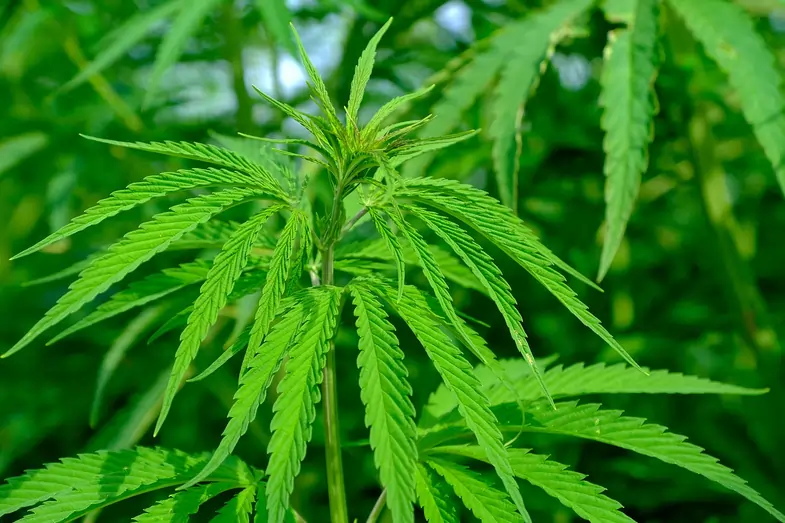

Hemp vs cannabis: a fundamental distinction for cultivation and use
Before analysing the diseases, it is crucial to understand the difference between ‘hemp’ and ‘cannabis’.
Although both come from the species Cannabis Sativa L. and may appear morphologically similar, the differences are substantial, especially at a chemical and legal level.
Hemp, defined at the European regulatory level as that variety of Cannabis Sativa L. whose tetrahydrocannabinol (THC) content – the main psychoactive compound – does not exceed a very low threshold (typically 0.2% or 0.3%), has been legally cultivated for millennia in many parts of the world. Its historical uses include the production of resistant textile fibres, ropes, paper, building materials and much more.
Recently, it has gained popularity as a source for the extraction of non-psychoactive cannabinoids, such as cannabidiol (CBD), and for the commercialisation of inflorescences known as legal weed. These products, like those available in the JustBob shop, are legal in many countries but intended exclusively for specific uses permitted by law, such as collecting, research and development, technical use, decoration or room fragrancing.
‘Cannabis’ in the common sense, on the other hand, refers to varieties selected to produce high levels of THC, the possession, cultivation and sale of which are often prohibited.
Understanding this distinction is essential: the health and quality of a legal hemp plant are fundamental to obtaining a final product that complies with regulations and has the desired characteristics for permitted uses, for example a specific aromatic profile for room fragrancing or an appearance suitable for collectors. These aesthetic and aromatic qualities are particularly sought after by enthusiasts in high-grade collectibles like legal hashish. Caring for the plant, where its cultivation is permitted, has a direct effect on the quality of the raw material, always in compliance with current laws.
Read also: Cannabis Yellow Leaves? Let’s clarify
Fungal diseases: the number one enemy of humidity and poor ventilation
The diseases caused by pathogenic fungi are among the most common and potentially devastating adversities for Cannabis Sativa L., favoured in particular by specific environmental conditions, first and foremost an excessive relative humidity combined with inadequate ventilation.
Powdery mildew is caused by various fungal species (e.g. Golovinomyces spp., Podosphaera spp.) and appears as a white, powdery patina that is easily removed by touch. It initially appears on the oldest, most shaded leaves, and then quickly spreads to young leaves, stems and, in serious cases, even to the inflorescences, reducing photosynthetic efficiency and compromising quality.
Grey mould (Botrytis cinerea) is another ubiquitous and very dangerous fungus, especially during the advanced flowering stage, when the buds are dense and retain moisture. It penetrates through small wounds or senescent tissues and causes a soft, greyish or brownish rot, often accompanied by a grey and powdery mould (the spores). It can destroy entire buds from the inside out.
Downy mildew, caused by oomycetes (fungus-like organisms), differs from powdery mildew because it develops inside the leaf tissue, manifesting itself with chlorotic (yellowish) spots on the upper side and a greyish-purplish mould on the underside, typically in conditions of high humidity and cool temperatures.
Finally, root and collar rot, caused by soil-borne fungi such as Pythium, Fusarium and Rhizoctonia, thrives in substrates that are too compact, asphyxiated and constantly wet. It attacks the roots and the base of the stem, causing them to blacken and decay, leading to withering, yellowing and death of the plant.
The management of these pathologies, in legal cultivation contexts, is strongly based on prevention: strict control of environmental humidity, optimisation of air circulation between and inside the plants, correct irrigation practices that avoid stagnation, use of draining substrates and maintenance of impeccable hygiene of the tools and environments.
Bacterial and viral problems: less common but potentially serious
Although statistically less frequent than fungal infections, diseases caused by bacteria and viruses can represent a serious threat to the health of Cannabis Sativa L., often with less specific symptoms that are more difficult to diagnose without laboratory analysis.
Bacterial infections can manifest in various ways: necrotic leaf spots, often with a yellowish halo or a ‘watery’ or ‘oily’ appearance (e.g. Pseudomonas syringae, Xanthomonas campestris pv. cannabis); rapid wilting due to bacterial obstruction of the xylem vessels; or soft rot of stems or roots.
Controlling phytopathogenic bacteria is complex; prevention is therefore fundamental. Using healthy and certified propagation material, thoroughly disinfecting tools (especially cutting tools such as pruning shears), and avoiding unnecessary wounds or stress to the plant are essential practices.
Viruses represent an even greater challenge, as there are no direct curative treatments for infected plants. The Tobacco Mosaic Virus (TMV) is often mentioned, but its real capacity to infect and cause significant damage to cannabis is still the subject of scientific debate.
Other viruses, such as the Cucumber Mosaic Virus (CMV) or some Potyviruses, have been identified in cannabis.
Typical symptoms of a virus infection include leaf deformations (curling, blistering), stunted and dwarf growth, and streaks or mosaic marbling (alternating light/dark green patches) on the leaves. Transmission often occurs through insect vectors (aphids, thrips, whiteflies), contaminated tools or infected propagation material.
Management is based exclusively on prevention: strict control of vectors, obsessive hygiene, use of guaranteed healthy starting material and immediate removal and destruction of suspect plants to avoid spreading within a crop (where legal).
Quarantine and observation of new plants before introducing them into the main environment are other important precautionary measures.
Nutritional deficiencies and excesses: deciphering the signals from the food
A suffering cannabis plant is not always the victim of a pathogen. Very often, symptoms such as yellowing, spots, necrosis, slow growth or deformations are the manifestation of a nutritional imbalance, i.e. a deficiency or excess of one or more essential mineral elements, or environmental conditions that prevent proper root absorption.
Nutritional deficiencies can affect both macronutrients (nitrogen, phosphorus, potassium, calcium, magnesium, sulphur) and micronutrients (iron, manganese, zinc, copper, boron, molybdenum).
Each deficiency has its own characteristic symptoms, although sometimes they overlap: a lack of Nitrogen (N) causes general yellowing starting from the oldest leaves; a lack of Phosphorus (P) can cause stunted growth and purplish colouring; a lack of Potassium (K) causes necrosis starting from the edges of the oldest leaves; Calcium (Ca) and Magnesium (Mg) are often associated with necrotic spots or interveinal chlorosis (Mg) on intermediate or young leaves; Iron (Fe) causes a typical interveinal chlorosis on the youngest leaves.
Equally harmful are excess nutrients, commonly due to over-fertilisation (‘nutrient burn’). This typically manifests itself with burnt, dry leaf tips and edges that are dark brown in colour, often curling downwards, and leaves with an unnaturally dark and glossy green colour.
A critical factor that regulates the absorption of nutrients is the pH of the root zone (substrate or hydroponic solution). pH values that are too high or too low can ‘block’ the assimilability of specific elements, even if they are present in adequate quantities, causing secondary deficiencies (nutrient lockout phenomenon).
Therefore, monitoring and adjusting pH and electrical conductivity (EC, an index of total salt concentration) are fundamental practices in nutritional management in controlled environments, to prevent and correctly diagnose these nutritional imbalances. Such meticulous attention to nutritional balance is crucial not just for plant vitality, but also ensures the quality necessary for consistent derived products, such as CBD oil.
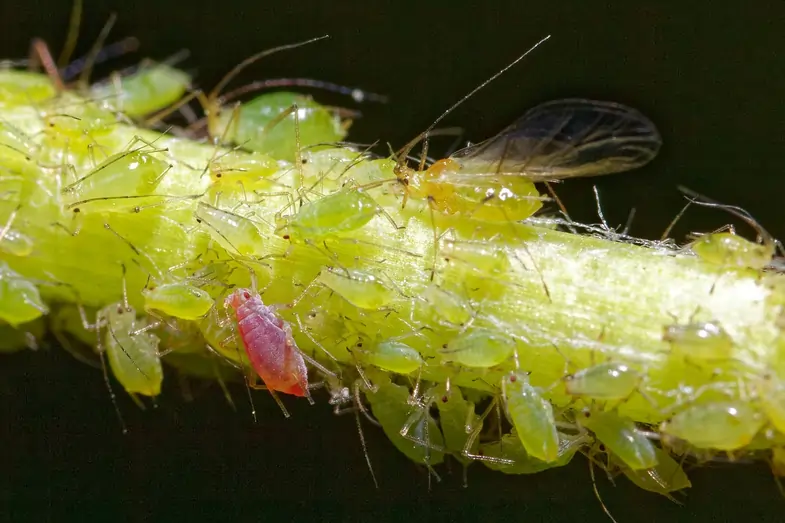

Pests: identifying small invaders and their damage
Another significant category of problems that can afflict Cannabis Sativa L. are attacks by plant-eating insects and mites. These organisms feed on plant tissue, causing various types of direct damage, weakening the plant and making it more susceptible to secondary infections. Furthermore, many of them act as vectors for viruses and bacteria.
One of the most common and harmful parasites is the red spider mite (Tetranychus urticae), a mite that is almost invisible to the naked eye and that infests the underside of leaves. By feeding on the sap, it causes a characteristic chlorotic (yellow or whitish) spotting that, as the infestation progresses, can lead to the leaves drying out and the formation of thin cobwebs between the leaves and buds.
Aphids are small insects with a soft body, of variable colour (green, black, yellow), that gather in colonies on tender shoots and on the underside of leaves, sucking sap and producing abundant honeydew, a sugary and sticky substance that soils the plant and favours the development of black saprophytic fungi (sooty mould).
Fungus gnats (Sciaridae) are small dark flies whose larvae, whitish with a black head, develop in moist substrate feeding on decomposing organic material and, especially in young plants, on the delicate roots, causing stress, stunted growth and possible root infections.
Thrips are small, thin insects, often difficult to see, that feed by scraping the leaf surface and sucking cell fluids, leaving characteristic silvery or bronze scars and small black dots (excrement).
Regular and meticulous inspection of plants, including the underside of leaves and new shoots, using a magnifying glass if necessary, is essential for early diagnosis.
Where cultivation is legal, the preferred management approach is integrated pest management (IPM), which combines monitoring, biological methods (introduction of predatory insects or parasitoids), physical methods (yellow or blue chromotropic traps) and, only as a last resort, the targeted use of plant protection products with low environmental impact and compatible with the end use of the product, always in compliance with regulations on food safety or product safety.
Prevention strategies: cultivating plant health
As emerges from the discussion of the various issues, prevention plays an absolutely central role in keeping Cannabis Sativa L. plants healthy and productive, minimising the need for curative interventions that are often complex, expensive and not always decisive. A proactive approach to plant health, applicable in contexts where cultivation is legally permitted, is based on several well-established agronomic practices.
Careful environmental control is perhaps the most critical factor, especially in indoor or greenhouse cultivation. It is essential to maintain the temperature and, above all, the relative humidity within the optimal range for the growth phase (generally higher during the vegetative phase, lower and more controlled during flowering to prevent mould).
Ensuring vigorous and uniform air circulation, both above and below the canopy, helps to reduce humid microclimates that favour the growth of fungus and disturbs some flying insects.
Hygiene is another pillar: keeping the growing area clean of plant residues, regularly disinfecting pots, surfaces and tools (especially between plants when pruning or taking clones), and even changing your clothes or washing your hands before entering the growing area can drastically reduce the accidental introduction of pathogens or parasites.
The choice of genetics, where possible, can make a difference: some cultivars have been selected for a greater intrinsic resistance to specific diseases (e.g. powdery mildew, mould) or environmental stresses.
Careful irrigation management (avoiding excess and stagnation, ensuring good drainage) and a fertilisation plan that is balanced and adapted to the phenological phases help to create robust and less susceptible plants.
Finally, the constant and careful observation of the plants remains the most powerful preventive and diagnostic tool, allowing you to pick up the very first signs of any anomaly and intervene promptly.
Read also: Marijuana without THC: effects and benefits
An informed approach to hemp and cannabis health
Understanding and being able to identify the common diseases, parasites and nutritional imbalances that can affect Cannabis Sativa L. is a valuable skill for anyone who cultivates this plant, whether for botanical interest, for legal cultivation, or to evaluate the quality of legally available cannabis products on the market, such as those available from specialized online shops like JustBob.
We have explored how fungi, bacteria, viruses, insects and environmental or nutritional imbalances can manifest themselves through a variety of symptoms, sometimes specific, sometimes more generic.
Careful observation, combined with knowledge of the plant’s needs and the conditions that favour various problems, is the key to correctly interpreting the plant’s state of health. Preventive practices – environmental control, hygiene, balanced nutrition, regular inspection – have emerged as fundamental strategies to promote the plant’s vigour and minimise risks.
Cannabis plant diseases: takeaways
- The most effective strategy to safeguard Cannabis Sativa L. from diseases and pests is not reactive treatment but proactive prevention. Environmental control (especially humidity and ventilation), meticulous hygiene of tools and growing spaces, and constant visual monitoring of the plants allow early detection and reduce the risk of fungal outbreaks, viral spread or pest infestation. These practices are particularly important in legal cultivation contexts, where plant health directly impacts product quality and regulatory compliance.
- Visual symptoms such as chlorosis, necrosis, leaf deformation, stunted growth or mouldy residues are vital indicators of specific problems—whether fungal, bacterial, viral, or nutritional. For example, white powdery coatings point to powdery mildew, while interveinal chlorosis may suggest magnesium or iron deficiencies. Understanding these visual cues allows for quicker diagnosis and targeted intervention, especially in environments where laboratory analysis is not accessible.
- Nutrient imbalances—both deficiencies and excesses—can mimic disease symptoms and compromise plant development. Ensuring proper fertilisation according to the plant’s phenological stage, and maintaining optimal pH levels in the root zone, are essential to avoid issues like nutrient lockout or over-fertilisation. Robust, well-nourished plants are naturally more resistant to pathogens and stress, reinforcing the importance of a precise and adaptive nutritional plan.
Cannabis plant diseases: FAQ
What are the most common fungal diseases in Cannabis Sativa L. and how can they be prevented?
Common fungal diseases include powdery mildew, grey mould (Botrytis cinerea), downy mildew, and root rot caused by pathogens like Pythium or Fusarium. These diseases are promoted by high humidity and poor ventilation. Prevention involves controlling humidity, improving air circulation, avoiding water stagnation, and maintaining hygiene in tools and growing environments.
Can cannabis plants be affected by viruses or bacteria?
Yes, cannabis can be affected by bacterial infections (e.g., Pseudomonas or Xanthomonas) and viruses such as the Cucumber Mosaic Virus. Symptoms may include necrotic spots, leaf deformation, and growth stunting. Since treatment is difficult, prevention through hygiene, vector control, and the use of healthy planting material is essential.
How do nutritional imbalances affect cannabis plants?
Nutritional imbalances, such as deficiencies or excesses of minerals, can cause symptoms like yellowing, spots, or leaf deformation. Common issues include nitrogen deficiency, potassium toxicity, or calcium-related necrosis. Proper pH management and balanced fertilisation help ensure healthy nutrient uptake and avoid such problems.

